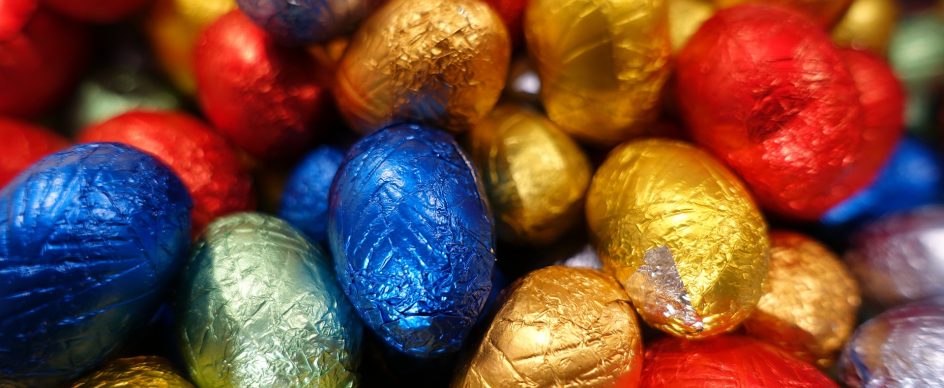
Easter in Malta| 15th – 21st April 2019
- Mar 16, 2019
Easter in Malta is truly spectacular and not to be missed.
Malta being a devout Roman Catholic country sees Easter as being a holy week… it is not just about chocolate eggs and Easter bunnies. However, even if you aren’t religious you will find the pageantry and theatre of the Holy Week captivating. There are various events taking place across the islands over the week, which starts with Palm Sunday and ends with Easter Sunday and there are a number of important days such as the Feast of Our Lady of Sorrows, Maundy Thursday, and Good Friday. Processions on these days date back to the 16th Century and are a foundation stone of Maltese culture with events taking place across most towns and villages throughout the week. It is taken very seriously too, as many communities have formed dedicated drama groups solely to organise and perform events across this most holy of weeks in the Maltese religious calendar.
Our Lady of Sorrows
The feast of Our Lady of Sorrows, known by the Maltese as Id-Duluri, is a feast that normally falls upon the Friday before Good Friday. This day is a special celebration to many Maltese people where the pious faithful walk, sing, pray and recite the rosary in processions following the statue of Our Lady of Sorrows. Some of the most devoted walk barefoot or even drag heavy chains tied to their feet, to express their thankfulness for receiving special grace. Many communities across Malta and Gozo hold an Our Lady of Sorrows procession, however the most popular one is held by the Church of Our Lady of Jesus in the capital Valletta.
Palm Sunday
Palm Sunday is the Sunday prior to Easter Sunday. This day will be marked by churches and their parishes across the nation. Palm leaves and olive branches are blessed with holy water before the faithful followers walk in procession waving these blessed branches. Blessed palm tree branches are tied into crosses and small bunches of olive leaves are given to the believers as a blessing.
Maundy Thursday
Maundy Thursday is the eve of Good Friday. Known also as the evening of the “Seven Visits”, the pilgrims make a visit to seven different churches to pay reverence to the Altars of Repose. A very popular location for the Seven Visits is Rabat as it offers seven churches within a stone’s throw of each other. Also, on Maundy Thursday church bells are replaced with a rattle from the cuqlaita until the Saturday before the resurrection, as a sign of lamentation.
Good Friday
This day is the principal day of them all and is also a public holiday. All businesses are closed, and traffic is diverted to make way for grand processions. Some 17 towns and villages across the archipelagos celebrate the occasion with a procession commemorating the Passion of Christ. All will provide you with an amazing experience however the best of the processions on this day are in Valletta, Zebbug, Qormi, Zejtun and Xaghra in Gozo. The holy schedule begins in the afternoon with a service that leads into the procession that lasts several hours. Some men will carry life-sized statues that depict the Stations of the Cross through the streets. The men, women and children from the congregation wear detailed costumes from the period. You will see everything from angels, to shepherds, to roman centurions and many a biblical character roaming the streets on this holy day.
The music is as ever important in setting the solemn tone and the procession is led by the band at its head. Many of the flock use this day to demonstrate the depths of their faith or penitence by dragging chains or wooden crosses throughout the march. Onlookers remain stationary observing the parade in reverence as it passes by, however after the last statue, which is Our Lady of Sorrows, the disciples who are chanting in grave prayer follow the statue at the very end.
Easter Sunday
The atmosphere on Easter Sunday is completely the reverse of the tone set on Good Friday. This is when revelry commences. It is marked by the church bells ringing out the message that Christ has been resurrected. Churches are open and a special mass is held before yet another procession this time in celebration. The band is yet again at the head of the marching faithful, however the tunes are festive and the procession with the statue of the Risen Christ is short. With the climax to Holy Week in sight the way is cleared for the statue-bearers to make a run back to the church as excitement is high as the Risen Christ has triumphed over sin.
Easter Food
Food as with many celebrations across the world is strongly associated with Easter. Traditions are followed and passed down the generations. There are savoury dishes such as broad bean soup, “Kusksu” and then the sweet such as the international favourite, the Hot Cross bun, and Maltese carob sweets “karamelli tal-ħarob”. Lent is strictly observed across this deeply religious nation as you would expect, and many choose to give up sweets and desserts for the duration. However, “Kwarezimal” known as Lenten biscuits are allowed. They are deliciously chewy, with a nutty orange flavour, so this little Lenten cheat is well worth a try.
“Qaghaq tal-Appostoli” is an unleavened loaf that is traditionally eaten after the Seven Visits on Maundy Thursday. It is in a ringed shape and is made with honey and then garnished with almonds and sesame seeds, so again it is not one to be missed whilst rejoicing in holy week.
Figolli are the most popular of the traditional Maltese foods at Easter time. They are freshly baked at Easter to give to friends and family and particularly to children on Easter Sunday after mass. Figolli are sweet almond Easter cakes which are covered in icing or chocolate and decorated with half a chocolate Easter egg in colourful foil which is perched on top. They have until recent years been made in shapes relating to biblical stories such as fish and lamb, however you will now find Figolli in more generic shapes such as cars and butterflies. At the end of Holy Week on Easter Sunday the people of Malta rejoice with their families and enjoy lavish lunches along with these traditional festive treats.
Where To Stay Over Easter Week In Malta?
Well with so much spectacle to take in along with all the other treasures of Malta and Gozo you will want to make sure that you have a comfortable bed to rest your head that is within easy reach of all that there is to see and do. Casa Ellul in the heart of Valletta is on Old Theatre Street and sits beautifully in the shadow of the Lady of Old Mount Carmel Church, so the ambiance of Holy Week will be all around you. Casa Ellul is a stunning old baroque Maltese palazzo that has been lovingly restored and is now one of the most beautiful boutique hotels in Valletta. Truly a home from home full of history and wonders, Casa Ellul will offer you every comfort to make your stay in Malta over this reverent time a memorable one.




